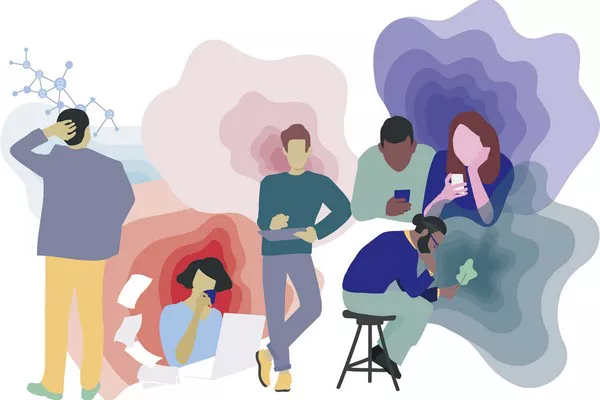Physical education, often considered a cornerstone of school curricula, goes beyond the development of physical fitness and motor skills. In recent years, an increasing body of research has shed light on the myriad mental benefits associated with regular participation in physical education. This article delves into the multifaceted ways in which physical education positively influences mental well-being, exploring the intersections of physical activity and cognitive, emotional, and social aspects of development.
The Cognitive Connection:
Enhanced Cognitive Function:
Physical education has been linked to improved cognitive function, including enhanced attention, memory, and problem-solving skills. Regular exercise has been shown to stimulate the release of neurotransmitters, such as dopamine and serotonin, which play crucial roles in cognitive processes.
Boosted Academic Performance:
Numerous studies suggest a positive correlation between physical activity and academic achievement. Engaging in physical education not only supports cognitive function but also contributes to increased focus and attentiveness in the classroom. Exercise-induced improvements in concentration can lead to better academic performance.
Brain Structure and Development:
Physical activity has been associated with changes in brain structure and function. Regular exercise promotes the growth of new neurons, particularly in areas of the brain related to learning and memory. These structural changes contribute to the overall cognitive resilience of individuals who participate in physical education.
The Emotional Dimension:
Stress Reduction:
Physical education serves as a powerful stress management tool. Exercise triggers the release of endorphins, the body’s natural mood lifters. As students engage in physical activities, stress levels decrease, fostering a more positive emotional state.
Improved Mood and Well-being:
Regular physical activity is linked to an improved mood and overall sense of well-being. The release of endorphins not only helps alleviate stress but also contributes to feelings of happiness and relaxation. This emotional uplift can have a lasting impact on a student’s mental health.
Reduction in Anxiety and Depression:
Physical education has demonstrated its ability to reduce symptoms of anxiety and depression, both of which are prevalent mental health concerns among students. Exercise acts as a natural antidepressant, promoting emotional resilience and mitigating the effects of anxiety.
The Social Landscape:
Enhanced Social Skills:
Physical education provides a structured environment for social interaction, fostering the development of essential social skills. Team sports, group exercises, and collaborative activities encourage communication, cooperation, and teamwork, contributing to improved interpersonal relationships.
Building Confidence and Self-esteem:
Success in physical activities, whether individual or team-based, can significantly impact a student’s confidence and self-esteem. Mastering new skills, achieving personal fitness goals, and receiving positive reinforcement from peers and teachers all contribute to a sense of accomplishment and self-worth.
Promoting Inclusivity and Cooperation:
Physical education offers opportunities for inclusive participation, regardless of individual abilities. In an environment that celebrates diverse strengths, students learn to appreciate and support one another. This inclusivity promotes a sense of belonging and cooperation.
The Behavioral Nexus:
Reduced Behavioral Issues:
Engaging in physical education has been associated with a reduction in behavioral issues among students. Regular physical activity helps channel excess energy, reduce restlessness, and enhance focus, contributing to a more conducive learning environment.
Improved Sleep Patterns:
Physical education supports the establishment of healthy sleep patterns. Regular exercise helps regulate sleep cycles and improves the quality of sleep. A well-rested student is better equipped to manage stress, concentrate in class, and maintain emotional balance.
Strengthening Self-discipline:
Participation in physical education requires adherence to rules, commitment to routines, and the cultivation of self-discipline. These attributes developed through physical activity can extend beyond the gymnasium, positively impacting students’ behavior and approach to challenges in other areas of their lives.
Practical Applications and Considerations:
Integrating Physical Activity into the Academic Day:
Recognizing the cognitive benefits of physical activity, some educators are integrating short bursts of exercise into the academic day. These “brain breaks” have been shown to enhance students’ ability to focus and engage in learning activities.
Tailoring Physical Education Programs:
Designing physical education programs that cater to individual interests and abilities can maximize the mental health benefits. Providing a variety of activities allows students to explore different forms of exercise, fostering a lifelong appreciation for physical activity.
Creating Supportive Environments:
Schools play a crucial role in creating environments that support the mental health of students. Implementing policies that prioritize physical education, ensuring access to safe and well-equipped facilities, and promoting a positive culture around exercise contribute to a holistic approach to well-being.
Conclusion:
Physical education stands as a dynamic and integral component of education that extends far beyond the development of physical prowess. The mental benefits associated with regular participation in physical education are vast, impacting cognitive function, emotional well-being, social skills, and behavior. As educators and policymakers strive to create comprehensive learning environments, the recognition of the symbiotic relationship between physical and mental health becomes paramount.
By fostering a culture that values and prioritizes physical education, educational institutions can contribute significantly to the overall well-being and academic success of students. The integration of physical activity into the academic day, tailored physical education programs, and the creation of supportive environments collectively form a blueprint for nurturing both the body and mind, laying the groundwork for a healthier and more resilient generation.


